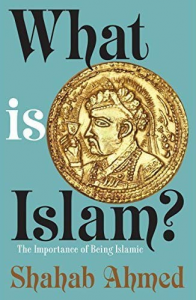“Five white men, seven black men, and three Assyrians”: Reading Sidney de la Rue (1930) on the Syrian-Lebanese Diaspora in Liberia and Racial Ambiguity and Intermediacy in a Racial Republic
A while back, I was preparing a research prospectus for a paper on race, citizenship, and the formation of Lebanese Ethnic Communities in the Republic of Liberia, 1899-1997.[1] Here’s a bit of what I was looking at:
In 1984, Liberia’s ruling military junta issued a new constitution for the Republic of Liberia. The new Constitution sparked a wave of protests in Liberian cities by ethnically Lebanese and Syrian merchants: in spite of a thoroughgoing overhaul of the old [1847] Republic of Liberia Constitution — led by explicit promises of national integration and of full citizenship for Liberians outside of the Americo-Liberian settler elite — the junta chose to retain a racial prerequisite clause on Liberian citizenship. This clause, stating that
only persons who are Negroes or of Negro descent shall qualify by birth or by naturalization to be citizens of Liberia,used language closely modeled on the racial prerequisites that had restricted Liberian citizenship from the founding of the Republic in 1847. Lebanese immigrants first began to arrive in Liberia in 1899, as part of a larger Lebanese and Syrian diaspora throughout West Africa. They formed ethnically distinctive, politically marginalized, but economically powerful multi-generational communities, specializing in coastal and inland trade. At the same time that Libano-Liberians began to form a noticeablemiddleman minoritycommunity, the Liberian state was also beginning assertively to formalize tribal and racial distinctions, to encode ethnic categories in law as a technique of administration over the Hinterland, and to manipulate and mobilize officially recognized ethnic groups as components of a system of political patronage. In this research project, I will examine the strained relationship between Libano-Liberian communities and the Liberian state’s recognition of ethnic and racial categories. I will argue that the ambiguous or intermediate status of Libano-Liberians shaped political debates over Liberian citizenship, while racial exclusions from citizenship shaped Lebanese community formation, notably in attitudes toward gender and mixed marriages. . . .—
Five wihte men, seven black men and three Assyrians: Race, Citizenship and the Formation of Lebanese Ethnic Communities in the Ethno-National Integration of the Republic of Liberia, 1899-1997
Research Prospectus (2017/2019)
That paper’s on hold, at best, for the immediate future, but I have had some time recently to start dipping back into the research. Here’s a passage from one of the primary sources I was looking at; this is from Sidney de La Rue’s book on his time in Liberia, Land of the Pepper Bird, Liberia (1930). De la Rue was a white American; he lived in Liberia for about six years during the late 1920s as Financial Adviser to the Liberian government (as part of a de facto receivership protectorate, demanded and administered by the U.S. State Department) — although in the book he never does get around to spelling out why he was in Liberia in the first place. Anyway, this is his passage on the Syrian
diaspora, which is one of the primary sources that I would be looking at for evidence of the cultural reception of Syrian and Lebanese as an ambiguous, or third and intermediate racial group, in between white men
and black
Africans.
Chapter XV.
Palm Oil Ruffians.
. . . The demand for cheaper ways of retailing to the native has been to some extent satisfied from an unexpected direction: After the World War, Syrian [296] subjects of France worked their way down the West Coast,[2] first establishing themselves in the larger cities and then working up country. Today many Syrians will be found along the entire Coast, usually living in little shacks or native huts and displaying a stock of bright cloths, salt, tobacco, gin where permitted, and cheap wares generally known as trade-goods. They usually start by buying for cash from one of the big factories. As business increases, they bring in friends and relatives, and throw out a line of little shops along the travelled roads and thickly settled native districts. In the last five years they have become the middlemen between the factories and the natives, taking the place, to a very great extent, of the old sub-factories.
In railroad work and in the building of harbours or the clearing of great plantations, the Syrian is acting as a small labour contractor. He can live on the food products of the country, and he has a considerable immunity to both sun and fever. While from another point of view he is also particularly suited to the Coast as he has little or no colour prejudice, but mingles freely and intimately with the natives. His racial position for this reason is not clear to the natives and reminds me of an amusing story.
One day a Kru headman from an incoming [297] steamer was asked how many passengers had been brought up the Coast.[3] He answered,
Massah, dey be five white men, seven black men, and three Assyrians.— Sidney de la Rue, Land of the Pepper Bird, Liberia (1930)
Chapter XV,Palm Oil Ruffians, 295-297.
- [1]1899 is the conventional approximate date for the first arrivals of Lebanese migrants in Liberia; the 1997 elections are the conventional date for the end of the First Liberian Civil War.↩
- [2]The World War is World War I; the
Syrian subjects of France
are migrants from the League of Nations Mandate for Syria and the Lebanon, then occupied and administered by French forces. They included both people who we’d callSyrians
today, but also a lot of people who we’d now callLebanese,
especially among those who settled in West Africa. –RG.↩ - [3]The Kru people are one of the officially recognized native tribes in Liberia. –RG.↩

